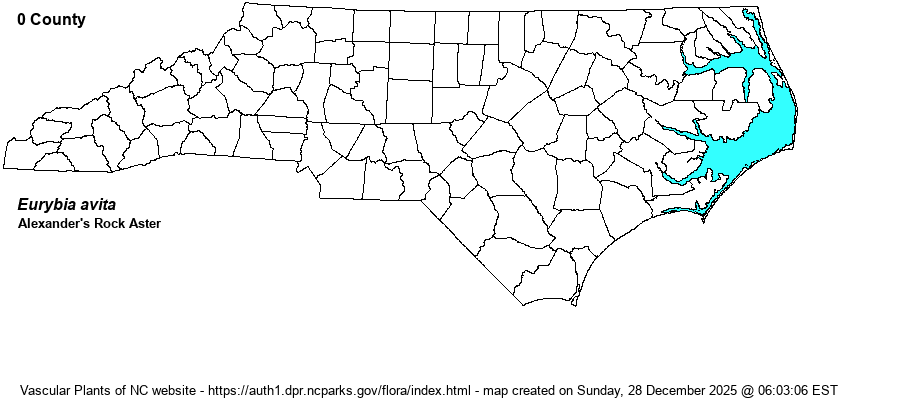| Author | (Alexander) G.L. Nesom | |
| Distribution | Formerly considered to occur only in the southern Mountains, reported only from two sites in Transylvania County: granitic outcrop at Toxaway Falls in 1981; granitic flatrock at Bridal Veil Falls in 1985. However, Weakley (2020, 2024) has taken the species off his NC flora, and he and the NCNHP database say that the specimens in NC are believed to be E. surculosa. Now considered as not present in NC.
Endemic to the Southern Appalachians of northwestern SC, southward to west-central GA. | |
| Abundance | Specimens are believed misidentified. The NCNHP moved the species off its Watch List (W3) in late 2022. | |
| Habitat | Open granitic domes or flatrocks. | |
| Phenology | Flowering and fruiting September-October. | |
| Identification | The genus Eurybia has been split from Aster (now Symphyotrichum). Variation among species of each genus requires several steps in a key to split members of the two genera apart (see genus key in Weakley 2018).
These plants are about 1-2 feet tall, have linear leaves, and lavender to pinkish rays. From other Eurybia, Alexander's Rock Aster differs in having linear leaves (vs. bases essentially cordate) and the inflorescence is mostly flat-topped (vs. elongate vertically). Some specimens may key to E. paludosa, but that is a species of Coastal Plain wetlands. | |
| Taxonomic Comments | Formerly known as Aster avitus.
| |
| Other Common Name(s) | None | |
| State Rank | SR [SRF] | |
| Global Rank | G3 | |
| State Status | | |
| US Status | | |
| USACE-agcp | | |
| USACE-emp | | |

